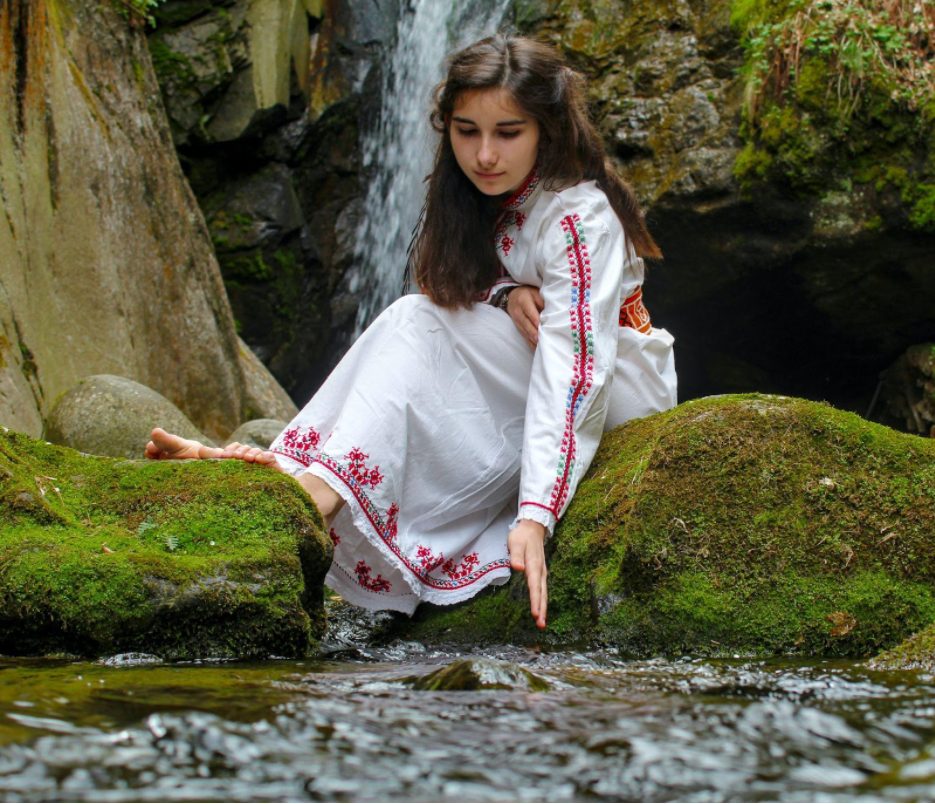St. George’s customs in the village of Gorno Draglishte
The village of Gorno Draglishte is a pretty village in the Razlog valley , located about 13 kilometers from the town of Razlog. History says that the name of the village comes from a shepherd named Dragan, who led his flock of sheep to pasture in Rila.
Walking, captivated by the views, he found himself in the present village of Gorno Draglishte . He liked it so much that he decided to live there and so the village was named after him.
St. George’s Day is one of the most widespread and celebrated Bulgarian holidays . It is in honor of the bravery and the Bulgarian army, as well as a holiday for the shepherds. It is celebrated on May 6th , and the Orthodox Church celebrates St. George the Victorious , warrior and patron of shepherds, flocks and fields.
The history of the picturesque village is directly connected with the shepherd and his flock , so it is no surprise that the customs and traditions of St. George’s Day have survived to this day.
Let’s take a look at some St. George’s customs in the village of Gorno Draglishte.
St. George’s Day – traditions and customs
Ritual table and dishes
We all know that on St. George’s Day a lamb is slaughtered and a rich table is set. Tradition dictates that this lamb should be the first born during the year and that the festive table has to be full of greenery and to be common to the whole village.
While this was common in the past, now this St. George’s custom in the village of Gorno Draglishte is found more in the comfort of individual family homes.
Traditional St. George’s Day dishes include:
- whole roast lamb
- lamb with fresh onion and fresh garlic
- lamb with vegetable sauce
Swinging the “ twist”
Swinging the “twist”, or in other words the swing, is a custom that is familiar to many people.
While in the past on St. George’s Day people everywhere swung on swings tied to deciduous trees, now this is not the case. Tradition dictates that everyone should go through a swing , which is a symbol of the transfer of the power from the tree to the person who swings.
At present, this custom continues to exist in some of the villages in Bulgaria, including the village of Gorno Draglishte. There the girls swing on swings , while other people are spraying them with water and praying for health and wishing for rain and prosperity during the summer season.
Floral immersion
The floral immersion is a Bulgarian custom, which in other parts is performed on St. Basil’s Day. However, it is a St. George’s custom in the village of Gorno Draglishte and is observed on the eve of the 5th against the 6th of May.
Residents of the village report that clay pots, half full of water, are used for the custom . Two of them are tied with a red belt, imitating the married couple and their commitment. The girls from all over the village gather without the bachelors, each making their own bouquet, using the flowers and trees in their yard.
The bouquets are placed in the pots, but before that each girl puts a scar on her bouquet so that she can recognize it. Some of them put a bead, others a ring. Once the bouquets are placed in the pots on the eve of the holiday, they are left to stand overnight.
Early in the morning of St. George’s Day, before sunrise, everyone gathers again, singing many different St. George’s songs. The “leading lady” of the custom takes a bouquet out of the bowl and bless it.
An example of this is who the girl will marry. Once the bouquet is blessed, the girl to whom it belongs must recognize it and then her bless must come true. Then it’s time for a song and another bunch of bouquets until all the girls and their flowers are blessed.
The songs of this day include those for St. George, for crops and fields, prosperity, animals and others.
Why attend them?
Traditions are key to preserving a nation’s identity. That is why it is important to keep ancient customs alive in modern society. They help us to move to the past and arouse our interest and love for the homeland.
Although some traditions have changed over time and in different regions, those in the village of Gorno Draglishte remain alive to this day. The inhabitants of the village are always open to immerse their guests and passing tourists in the folklore of Bulgaria and to acquaint them with the national heritage.
How to get to the village of Gorno Draglishte from Lucky Bansko Hotel?
Getting to the village of Gorno Draglishte from Lucky Bansko Hotel is very easy. If you have your own vehicle or if you rent one, you need to take the main road in the direction of the village of Banya.
Then you will pass through the village of Dolno Draglishte, just before you reach Gorno Draglishte. The total journey takes about 20 minutes by car.
It’s time to enjoy the beautiful nature and Bulgarian customs!
